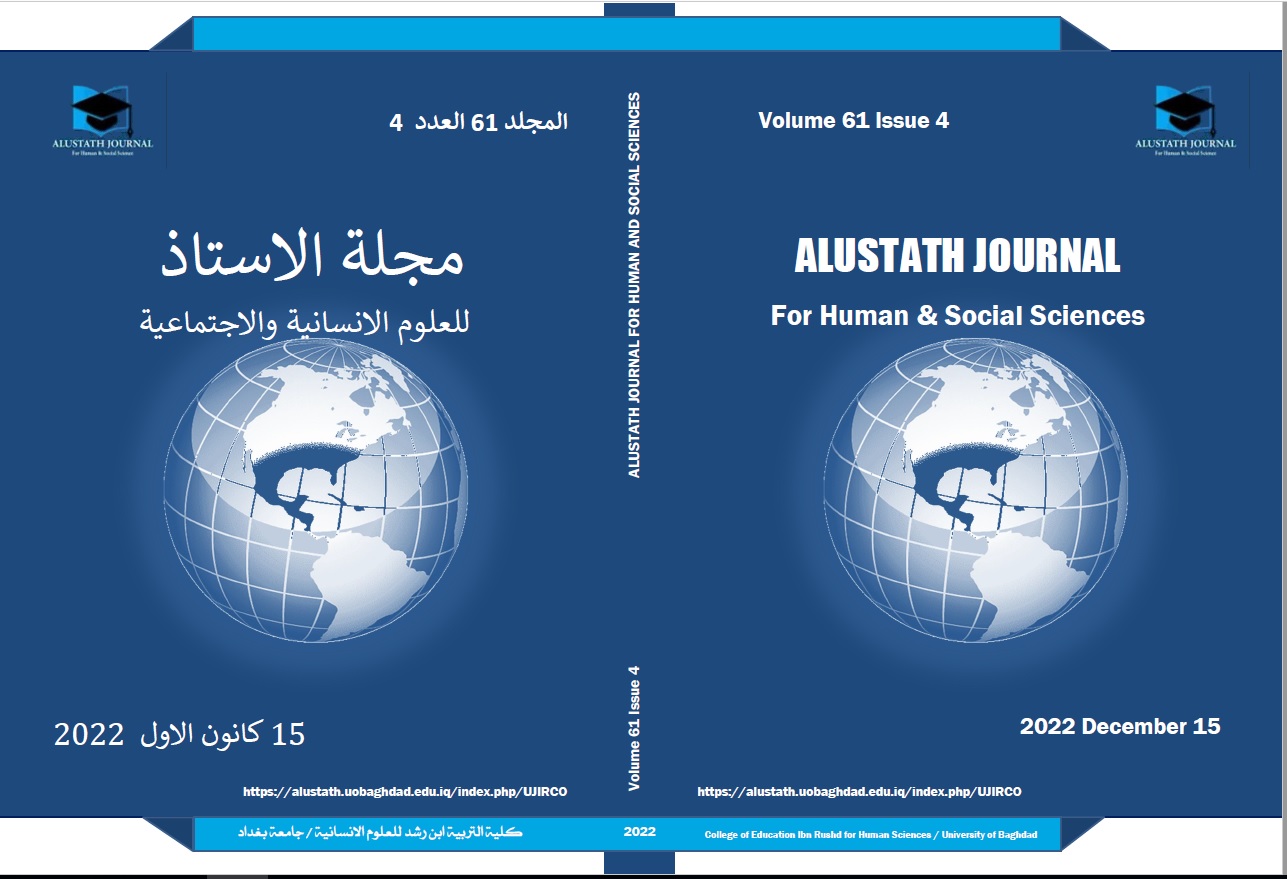Comparative Study in the Significance of the Character of Christ in the Poetry of Mahmoud Darwish and Ahmed Shamlou
DOI:
https://doi.org/10.36473/ujhss.v61i4.1686Keywords:
Christ, myth, comparative literature, Mahmoud Darwish, Ahmed ShamlouAbstract
Mahmoud Darwish and Ahmed Shamlou are considered among the modern poets in the Arab and Iranian world. The presence of different cultures in their poems is one of the common characteristics between them, which led to the worldwide fame of their poems. Christian thoughts and Christian culture were among the common origins of their poems. Therefore, the presence of Jesus Christ and his stories were noticeable in the poems of both Darwish and Shamlou. By employing this great character in their poems, these two poets were able to give their poetry more depth dimensions on the one hand, and on the other hand they were able to convey their themes and ideas with artistic expression. The current paper aimed - through a comparative reading - to compare the poetry of Darwish and Shamlou about Christ and decode of the various connotations of it. This comparison is based on the American school, and for this the comparison will be achieved without paying attention to historical studies and finding the common roots of influence. The results obtained from this research revolved around the fact that the Christian examples is present in the poems of both poets and was used to express existentialism, Marxism, mysticism and emotional feelings, but the difference in the image of Christ by each of the poets lies in the fact that Christ in Darwish poetry was in some places a symbol of redemption and the new resurrection. In other words, Christ had an analogy to creation myths such as Adonis and Tammuz, while it was not in Shamlou's poetry.
Downloads
References
• Bseiso, Abdul Rahman (1999). The mask poem in contemporary Arabic poetry, first edition, Beirut: The Arab Institute for Studies and Publishing.
• Jokar, Manouchehr. Rezaji, Aref (1390). Christian Elements and Contents in Shamlou's Poetry. Literary research. Issue 17.
• Hazrat Husayn (1389). A search in the works of workers' literature in the fiction literature. Chestan Journal. Issue 270.
• Khademi Kulayi, Mahdi (1386). Mythical manifestations of the prophets and legislators in the poetry of Shamlou, Mersal Al-Nur magazine “Bik Noor”, fifth year, issue 3.
• Dad, Sima (1378). A glossary of literary terms. I 5. Tehran. Marwared.
• Darwish, Mahmoud (2003). Don't apologize for what you did. Beirut: Riyad Al-Rayes for Books and Publishing
• Darwish, Mahmoud (1973). Complete poetic works. Beirut. The Arab Foundation for Studies and Publishing.
• Darwish, Mahmoud (2000). Mahmoud Darwish's Diwan. 2nd floor. Beirut. Home of return
• Darwish, Mahmoud (1968). Diwan of the occupied homeland. Collected it and Yusuf Al-Khatib gave it to him. Damascus: Dar Filastin.
• Rajai, Najma and Ali Asghar Habibi (1390). The niqab technique in the poem Christ after the crucifixion by Badr Shaker al-Sayyab. Arabic literature. Q3.P1 (Appendix 3).
• Sartre, Jean-Paul (1361). Existentialism and human originality. Translated by Mostafa Rahimi. 8th floor. Tehran. Marwared.
• Salimian, Gholamreza, Muhammad Arta, and Donia Heidari (1391). A comparative study of the semantics of symbols in classical literature and Ahmed Shamlo's poetry. Journal of Persian Language and Literature, p. 73.
• Shamlou, Ahmed (1389). Collection of works of the first volume: Poems 1323-1378. I 9. Tehran. Nagah.
• Shamisa, Sirous (1383). The evidence in contemporary literature. I 1. Tehran. Mitra.
• Abdul Kazem Ibrahim, Hiyam (2015). Christ in the poetry of al-Sayyab and Mahmoud Darwish. Lark Journal of Philosophy, Linguistics and Social Sciences. Issue eighteen, year seven.
• Abboud, Abdo (1999). Comparative literature: problems and prospects. Damascus: Publications of the Arab Writers Union.
• Fatouhi, Mahmoud (1389). eloquence of images. Tehran: Sakhn.
• Foladi, Ali Rida (1389). Sufism language. I 3. Tehran. preheat.
• Capleston, Frederick (1375). The History of Philosophy, translated by Jalal-al-Din Majtbawi, 3rd Edition, Scientific and Cultural Publishing Company. Tehran.
• Majidi, Hassan-Jan-Nathari, Fereshteh (2011). Technical characteristics of the contents of Mahmoud Darwish's poetry. Critical Illuminations in Arabic and Persian Literature, Issue 4.
• Mehdi ¬pur, Muhammad. Khakpur, Muhammad (1389). The anthem of contemplative life in the content and aesthetic principles of workers' literature. Journal of Persian Language and Literature, published by the Faculty of Arts and Humanities at Tabriz University. Year 53. Serial Issue 215.
• Mousavi, Seyyed Kazem. Humayun, Fatimah (1388). Existentialism has the guidance and alleys of nostalgia for the past in “The Stray Dog.” Literary research for publication. P. 10.
• Mawlawi, Jalal al-Din Muhammad Balkhi (1390), Masnawi al-Ma`nawi, Part 1, Tehran, corrected by Nicholson. Publish my paint.
• Naranji Hassan Kayada, Farah (1396). Westernization and departure from the semantic rule in the story of women by Eliza Eichinger. Journal of criticism of foreign language and literature. Issue 18.












